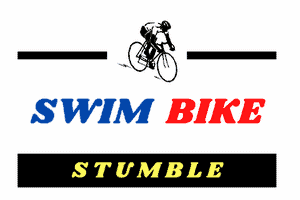I enjoyed the Well-Built Triathlete by Matt Dixon and found it informative and thought provoking. I particularly enjoyed his sections debunking the myths of triathlon swimming, cycling and running. This is not meant to be a comprehensive book review. I’m mostly going to talk about how Dixon’s views challenged my own and some training changes based on his philosophy.

I came away from the book with two realizations: that I had bought into much of the conventional wisdom about triathlon training, and that I probably had not done enough to test these ideas to see how well they were working for me. In short I had my own herd of sacred cows. Dixon went out of his way to throw rocks at some of them and may have attempted to drive a truck over one or two others. I’ll give some examples of Al’s cows throughout, as well as some of the adjustments I plan to make.
Sa·cred cow: (noun) an idea, custom, or institution held, especially unreasonably, to be above criticism (with reference to the Hindus’ respect for the cow as a sacred animal) from Google.

I found Dixon’s writing to be very insightful. Often in a sentence or two he was able to sum up key concepts in a way that was both perceptive and memorable. Here’s an example from his chapter on recovery:
“Smart recovery is incredibly difficult to execute, but even gladiators rested. At purplepatch we have a saying for athletes who fight hard and never recover: Be strong like bull, smart like tractor.”
Al’s Cow #1: Recovery: Too much emphasis on fixing problems and not enough on avoiding them.
In other words, I rely too much on therapeutic modalities like compression garments, massage and ice baths to get through the season. Based on Dixon’s recommendations: I plan to more actively track my training load and training stress. I am working on improving my sleep. Expect to see some blog posts on sleep and listening to your body.
The recovery chapter is one of the most highlighted portions of my copy of the book. Dixon outlines a comprehensive approach to recovery. He recommends keeping a training log of planned and completed workouts, perceived effort, motivation/mood, fueling and hydration. He also mentioned an recovery tracking app available at www.restwise.com.
I realized that I was doing a poor job monitoring my recovery and that I did not have a systematic approach to recovery. Also I definitely push too hard on easy days. In short my approach was about fixing breakdowns instead of avoiding breakdowns.
Dixon prefers heat to ice for recovery (recovery not acute injury) and self massage. He’s not a big fan of massage therapy because it requires time off to recover from deep tissue work. He goes so far as to say “Don’t bother stretching.” He suggests avoiding a shotgun approach to supplementation. I tried not stretching last season and then went back to stretching this season. I found stretching beneficial. That may be yet another difference between elite athletes like those Dixon coaches and age groupers like me.
Al’s Cow #2: Swimming is all about technique.
Dixon: “As I see it, many triathletes adopt an approach to swimming that devalues training time, focuses on technical improvements over conditioning, and lacks specific preparation.”
I’m working to build a powerful “motorboat” kick. I’ll also be placing more emphasis on open-water swim skills.
Al’s Cow #3: The key to the bike is time in the saddle.
Dixon: “To truly evolve as a rider, you need a healthy diet of lower-intensity training. However, you want to touch every intensity available within any given week of training.”
So it turns out what you do while getting time in that saddle matters. Who knew? Also read Dixon’s section on “Interacting with the Terrain.”
Al’s Cow #4: Running is about picking your battles and getting in the distance. (I may have been half right.)
Dixon: “If you want to learn to play the guitar, you shouldn’t just pick it up and spend several hours strumming on the weekend. Setting aside a little time daily to practice would be a better approach. Try a similar approach with your run training. The only safe route is frequent, shorter runs.”
I plan to take Dixon’s advice and emphasize more frequent shorter runs, improved running form and short, intense hill repeats and “a touch of speed work.”
The Bottom Line: The Well-Built Triathlete by Matt Dixon is highly recommended.
The Well-Built Triathlete on Amazon

